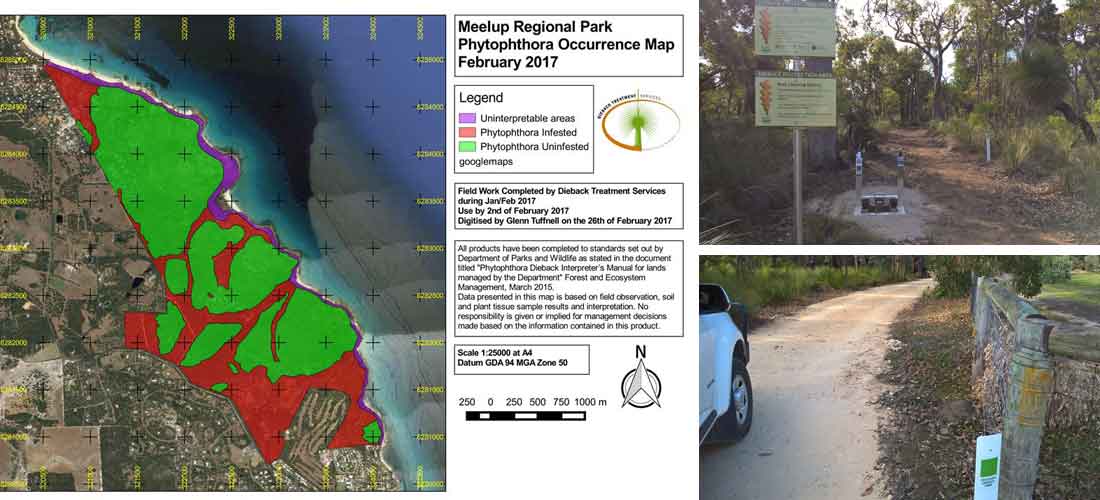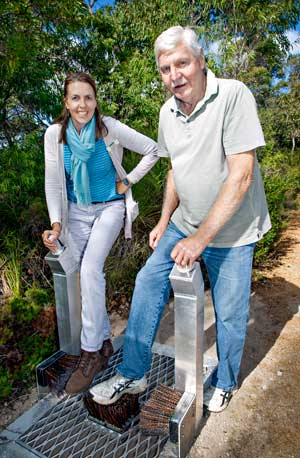Dieback is an introduced disease caused by the plant pathogen Phytopthera cinnamomi. Phytopthera kills susceptible plants such as jarrah, banksia and grass trees by attacking their root systems and is a major threat to the diversity of south-west WA flora. The movement of infected soil, plant material or water containing its spores, particularly under warm, moist conditions, will spread the disease into uninfected areas. Dieback can impact 40% of native plant species which subsequently impacts local fauna that rely on these plants such as pygmy possums.
Dieback is considered to be a significant threat to the native vegetation of the park, due to the number of susceptible species. Dieback mapping carried out in the Park in February 2017 showed that 25.5% of the Park is dieback infested and 61% uninfested (with the remaining 13.5% as unprotectable). The mapping showed problem areas to occur in the waterways of the park (all waterways are infected) in the area between the Dunsborough townsite and Meelup Beach Road.
Detection of Phytophthora dieback is usually based on visual assessment of vegetation condition and presence of symptoms. Both soil and plant tissue samples can be taken to aid in the interpretation process to identify the dieback pathogen.

Managing Dieback in the Park
 The issue of dieback poses a serious threat to the park's conservation values. To prevent the spread of the disease, it is critically important to manage access in the park.
The issue of dieback poses a serious threat to the park's conservation values. To prevent the spread of the disease, it is critically important to manage access in the park.
The City of Busselton (with support from CoastWest) has recently installed seven dieback hygiene stations in locations where walkers are entering dieback free areas. Walkers are encouraged to stop and clean their boots to remove any soil which may contain dieback spores to prevent the spread of dieback in the Park.
Management measures by the City of Busselton to help prevent the spread of dieback through the park include:
- A dieback boundary survey every five years; Dieback Interpretation Report (3.7MB)
- Limestone sheeting of some firebreak access tracks and some existing trails;
- Installation of dieback markers to raise visitor awareness of dieback in the park;
- Reducing water pooling on firebreaks;
- Phosphite treatment of Dieback buffer areas;
- Treatment of infected trees by injecting and foliar spraying;
- Ensuring that any works in the park adhere to management guidelines.
Photo: Courtesy of Times newspaper
